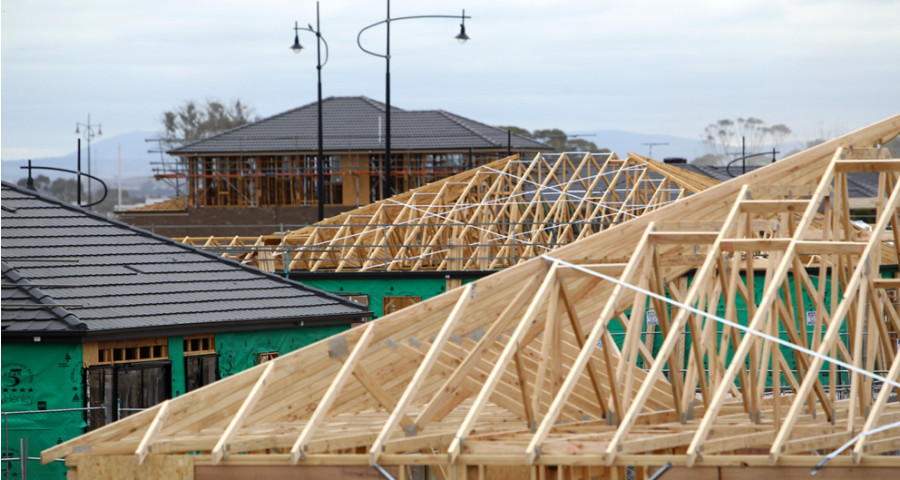Is there a housing affordability crisis in Australia?
Why is affordable housing important? The United Nations Human Rights Covenant gives prominence to housing. The covenant ".....recognizes the right of everyone to an adequate standard of living for himself and his family, including adequate food, clothing and housing, and to the continuous improvement of living conditions" (UN Office of the High Commissioner for Human Rights)
Some commentators question whether there is a housing affordability crisis in Australia. Home ownership rates remain relatively high despite sustained increases in median house prices in almost all capital cities. Commonwealth and State Governments provide significant assistance for first homebuyers and, in contrast to the US, Australia has one of the lowest rates of mortgage defaults in the world. In addition, this country has weathered the global financial crisis in relatively good shape.
There is no doubt that homeowners are generally doing alright, despite the vulnerability of those on moderate incomes that are only just able to get into, and hang on in, home ownership. Around 75% of Australians own or are buying their own home. Around 20% are in private rental and the remaining 5% are in some form of public or community housing. Public housing is wholly owned and managed by state governments and community housing is owned by private, not for profit housing agencies, usually with a significant government subsidy.
Demand on Australia’s private rental stock is increasing faster than supply. In the past private rental was a transitional stage for people on the way to home ownership but it is becoming a permanent state for more and more people. High immigration levels and young people delaying home ownership for affordability or lifestyle reasons have contributed to this trend. The supply of rental properties that are affordable for low to moderate income households in locations close to employment, services and public transport is in decline. Even where these properties are available, low income households are usually outbid for them by higher income households and this illustrates how housing choice relates to income. Moderate to high income households have the choice to move to more affordable housing if they are in housing stress but low income households have few choices or sometimes no choice.
It is households in the lowest 40% of income that are in greatest housing stress as they are faced with spending an unsustainably large proportion of their income on housing costs or are forced to live in cheap but substandard housing. Housing researchers usually define those within this group that are paying more than 30% of their income on housing costs as being in housing stress and those that spend more than 50% of their incomes on housing as being in severe housing stress. The proportion of low income households in housing stress has remained relatively constant since about 1995; today, around 746,000 low income households are in housing stress and about 1.4 million lower income households have insufficient income after meeting their housing needs to maintain a frugal standard of living.
How did it come to this?
The social housing sector is less equipped to fulfil its traditional role
Low income households have traditionally been housed in public and community housing but the social housing sector is simply unable to house people that it would have been able to house in the past. The reasons for this are increasing demand, a decline in government investment and the huge maintenance cost of an ageing public housing stock. One response has been to limit public housing eligibility to the most disadvantaged households and this carries its own problems. The decline in government investment has recently been turned around through $6.5 billion in funding for social housing as part of the Commonwealth Government’s Nation Building and Jobs Plan. But even this seemingly huge investment is not enough to make a big dent in waiting lists.
Less government intervention in the housing market
Commonwealth and State Governments have increasingly trusted in the private market to look after housing affordability with some assistance to low income households through the Commonwealth Rental Assistance subsidy. In the past, cyclical downturns in the housing market have, to an extent, improved housing affordability, but continued population growth has sustained demand and ensured that prices have generally continued to increase.
A development industry that is unable or unwilling to assist with affordable housing
Residential development is a risky business, margins are tight and developers cannot afford to be left with unsold land or dwellings. This is the main reason that we continue to see development of large, 3-4 bedroom, detached housing on the fringe of our main cities as the dominant development type. There is a proven market for this type of development and it is seen as just too risky to try something different like higher density or smaller dwellings for the growing number of small households. At the same time, housing aspirations have increased so much that the first home for a 1960’s household bears no resemblance to the three bedroom plus houses with indoor-outdoor rooms and home theatres that are produced today.
Tax regimes
Commonwealth and State Government taxation regimes favour home ownership in a way that is almost unequalled in developed countries. The lack of Capital Gains Tax on the family home makes investment in home ownership means that the family home is a secure and attractive asset for those in home ownership. Those that cannot afford to buy a home are unlikely to accumulate wealth in the same way. Negative gearing creates investment in new rental stock but it also sets up investors in competition with homebuyers in the housing market and puts pressure on prices.
Tax incentives are used in many countries to encourage large institutional investors to invest in affordable rental properties. This has been lacking in Australia until recently when the Commonwealth government introduced the National Rental Affordability Scheme (NRAS).
Undersupply of new housing
Increasing housing supply seems an easy solution but it is an area where there are a lot of conflicting motivations. For example, the development lobby calls the loudest for new land release to improve affordability but it is also known to land bank and ‘drip feed’ the market to maximise profits. There is room for state governments to improve efficiency in the release of residential land but caution should be exercised in looking at better land supply as the main solution to housing affordability. It is certainly not the solution for low income households who will never be able to afford a house in a new subdivision on the urban fringe. This type of development also contains hidden costs in the time and cost of commuting and the environmental impact of long distance car commuting to employment centres.
Links with social exclusion and sustainability
Real estate agents regularly speak about the importance of location in a positive sense but locations can also be associated with entrenched disadvantage for low income households. We all know of concentrations of disadvantage where low levels of employment, higher levels of crime and low levels of educational attainment combine to lock individuals and families into intergenerational poverty. The locations of these disadvantaged areas is rapidly moving to the urban fringes as the inner areas of our capital cities increasingly attract high income households because of good access to public transport, education, employment and cultural attractions. As these areas gentrify, low income households are being forced to live in car dependent suburbs far from centres of employment, education and reliable public transport.
Low income households that are ineligible for social housing often have to live with poor quality rental housing or other substandard options such as caravan parks or unregistered rooming houses. The proliferation of unregistered rooming houses around Melbourne is a clear indicator that there is an affordability crisis for low income households. Poor quality housing can directly or indirectly lead to a range of other negative impacts. These include:
- Social instability associated with having to move regularly when leases end
- Negative impacts on health and mental health
- Poor educational attainment for children with unstable schooling
- Lack of access to employment opportunity due to stigma associated with disadvantaged areas and lack of networks with people in employment
- Low sense of self-worth associated with living in an area with a ‘bad reputation’
The UN Special Rapporteur on Affordable Housing visited Australia in 2006 and his summary of his findings gives a critical but accurate picture of Australia’s status in regard to housing and why we should do more to improve the plight of those in housing crisis.
“By its own measure, Australia is a wealthy, developed and prosperous nation. The report contends that, despite this, it is not discharging either its progressive or core obligations in relation to these rights. The report demonstrates the way in which inadequate public housing programs, chronic under-funding of the Supported Accommodation Assistance Program and crisis accommodation services, as well as a lack of available, affordable and quality housing in the private market jeopardise the right of many Australians to adequate housing, and particularly the right to live somewhere in security, peace and dignity”. (Miloon Kothari, UN Special Rapporteur on housing, On Human Rights Law Resource Centre website)

